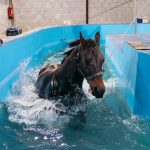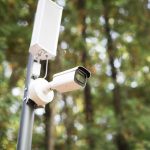As a proud Tesla Model S owner, you must enjoy the sleek lines, luxurious interiors, and the iconic electric power that this model brings. Yet, like any vehicle, it requires certain maintenance procedures. One such calling is managing brake dust. This may not be a risky task, but it demands your attention. This article aims to guide you through the most effective method to reduce brake dust on your Tesla Model S, with a particular emphasis on caution and the correct procedure.
The Brake System: An Overview
Before we delve into the specific procedure, it’s essential to have a basic understanding of your Tesla’s brake system. The brake system is composed primarily of the brake caliper, pads, and rotor. When you press the brake pedal, hydraulic fluid causes the caliper to press the brake pads against the rotor, which slows your car. Over time, this process causes a buildup of brake dust on your vehicle’s wheels.
A découvrir également : How Can You Maximize the Lifespan of Hybrid Batteries in a Toyota Prius?
Even though the Tesla Model S is an electric vehicle that uses regenerative braking, meaning it uses the vehicle’s electric motor to slow down the car instead of the brake pads, it still has a traditional brake system for additional stopping power and safety. This system is mainly used when the car is moving slowly or during an emergency stop, which also contributes to brake dust buildup.
Understanding Brake Dust
Brake dust, as you may have noticed, builds up on the front and rear wheels of your Tesla. This dust is a combination of metal shavings from the rotor, carbon residue from the brake pads, and dirt from the road. While brake dust does not pose a significant threat to your Tesla’s performance, it can be detrimental to the car’s aesthetic appeal. Furthermore, over time, if not properly managed, it can corrode and pit the wheel’s surface. Bear in mind, then, that this is more than a matter of vanity – it’s also about preserving your vehicle’s overall health.
Cela peut vous intéresser : How to Implement a Dash Cam Installation in a Jaguar XE for Legal and Insurance Purposes?
Basic Cleaning: The First Line of Defense Against Brake Dust
Regular cleaning is the simplest, albeit labor-intensive, method to reduce brake dust buildup on your Tesla Model S. Using a high-pressure hose, clean the wheel wells thoroughly. Next, use a wheel cleaner – select one that is pH neutral to avoid damaging the wheel’s finish. Spray the cleaner on the wheels and let it sit for a few minutes to break down the brake dust. Then, using a wheel brush, scrub the wheels, paying particular attention to the crevices and corners. Rinse off the cleaner and dry the wheels to prevent water spots.
Install Brake Dust Shields: A Proactive Defense
For a more proactive approach to managing brake dust, you might consider installing brake dust shields on your Tesla Model S. These shields are thin pieces of metal or plastic that fit between the wheel and the brake disc. They serve to block a considerable amount of dust from reaching the wheel. When installing brake dust shields, ensure to follow the manufacturer’s instructions closely. Improper installation could potentially interfere with wheel balance and brake cooling.
Opt for Low-Dust Brake Pads: A Long-Term Solution
If you’re looking for a long-term solution, consider investing in low-dust brake pads. These pads, made of ceramic or other compounds, produce significantly less dust than traditional semi-metallic brake pads. Replacing your brake pads requires a bit more technical know-how and tools. You’ll need to remove the wheel, release the caliper, and slide out the pads from the caliper abutment. Once the new pads are in place, reassemble the caliper and wheel. If you’re not comfortable doing this procedure, consider seeking professional help.
While keeping your Tesla’s wheels free from brake dust may seem like an arduous task, adopting a regular cleaning schedule, installing brake dust shields, or opting for low-dust brake pads can greatly help maintain your Model S’s lustrous appeal. Above all, undertaking these tasks with diligence and caution would ensure not just a clean vehicle, but a well-maintained one that continues to deliver the performance and safety you expect from this iconic model.
The Correct Procedure to Change Brake Pads: Be Sure to Stay Safe
When it comes to replacing your Tesla Model S brake pads with low-dust alternatives, the process requires a certain level of technical skill and appropriate tools. Ensuring safety is crucial while undertaking this task. Before you start, make sure to set your Tesla to service mode to prevent any sudden movement while working. It’s another step towards your safety and it’s an iconic warning that should not be overlooked.
To access the brake pads, you first need to remove the wheel. The brake caliper, which presses the brake pads against the rotor, is then visible. The front caliper and rear caliper may look slightly different, but the procedure for changing the pads is similar for both. The caliper is held in place on the rotor by retaining pins. Removing these will allow you to slide the brake caliper off the abutment flats on the rear carrier.
Once the caliper is removed, be sure not to let it hang by the brake line as this could cause damage. Instead, secure it onto a stable surface. You can then slide out the brake pads from the caliper. It’s a crucial step that demands your attention, since a risky situation arises if the pads are not removed properly.
After the old pads are removed, slide the new, Tesla approved brake pads in their place. It’s important to use approved brake pads to ensure the best performance and compatibility with your Tesla Model S. Once the new pads are in, the caliper warning should no longer be visible, which indicates that the pads are properly installed.
Reassemble the brake caliper on the rotor, making sure to replace the retaining pins. Finally, reattach the wheel. Repeat the process for each wheel to complete the brake pad replacement. This is the right way to respond to the icon calling for brake maintenance on your vehicle, turning a potentially risky situation into a successful DIY project.
Conclusion: Keeping Your Tesla Model S in Top Condition
Keeping your Tesla Model S in pristine condition involves more than just routine cleaning and maintenance. It also involves being proactive and attentive to warning signs. Brake dust, while not a severe issue, is an icon warning that calls your attention to the condition of your brake system. By understanding what causes brake dust and how to reduce it, you are taking a significant step towards preserving your vehicle’s overall health and aesthetics.
The most effective way to reduce brake dust on your Tesla Model S involves a combination of regular cleaning, the installation of brake dust shields, and the use of low-dust brake pads. These methods require varying levels of effort and technical skills, but the result is worth it. Not only will your wheels maintain their lustrous appeal, but you’ll also ensure that your brake system functions optimally, contributing to a safer driving experience.
Remember, brake dust might not pose a significant threat, but it’s still a calling attention to your vehicle’s maintenance needs. Regularly cleaning your wheels, installing brake dust shields, and opting for low-dust brake pads are all effective methods of attention to this warning. With caution and the correct procedure, you can ensure your Model S continues to deliver the performance, safety, and aesthetics you expect from this iconic model. Now, that’s taking care of your Tesla in style!











